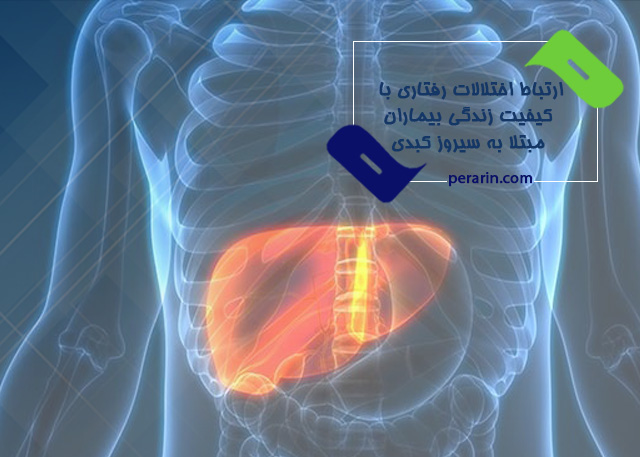The Relationship Between Behavioral Disorders and Quality of Life in Patients with Liver Cirrhosis
Although long-term alcohol consumption is the most common cause of cirrhosis, other causes include diseases such as hepatitis B and C, cystic fibrosis, galactosemia, and glycogen storage disease. The prevalence of this liver disease is particularly high in many Asian countries, where hepatitis B and C are widespread.
Symptoms of Cirrhosis
The symptoms of cirrhosis include increased portal hypertension, ascites (abdominal fluid retention), hepatic encephalopathy, esophageal bleeding, slowed drug metabolism leading to increased sensitivity to side effects, toxin accumulation in the bloodstream, and ultimately, death.
The buildup of toxins in the patient’s body can lead to mental impairment, personality changes, drowsiness and coma, memory loss, and lack of concentration. Like many other chronic diseases, patients with liver cirrhosis experience a significant decline in quality of life, which subsequently leads to psychological issues, especially depression, anxiety, and emotional deficits.
What Is Emotional Deficiency?
Emotional deficiency refers to an inability to express feelings due to a lack of emotional awareness. Individuals with emotional deficiency are generally unable to identify, understand, or describe emotions. These characteristics contribute to cognitive dysfunction, impaired emotion regulation, and are linked to the onset and persistence of certain psychiatric and medical disorders. Such individuals often misinterpret normal physiological arousal and physical signs of emotional activation as symptoms of illness.
Symptoms of Emotional Deficiency
Emotional deficiency is often accompanied by increased physiological arousal, heightened attention to physical symptoms, frequent complaints about these symptoms, and compulsive illness-related behaviors. Its role in the mechanisms of psychological distress is increasingly being recognized, particularly as a major risk factor for psychosomatic disorders. Since these individuals struggle to regulate their emotions, studies indicate a strong link between emotional deficiency and conditions such as anxiety and depression, particularly the latter.
The Link Between Liver Cirrhosis and Depression
According to available statistics, over 27% of cirrhosis patients in certain countries suffer from depression. Additionally, there is a direct correlation between the severity of depressive symptoms and the progression of the disease. A study conducted by Bianchi et al. on 56 Italian cirrhosis patients revealed a significant decline in psychological well-being compared to healthy individuals. Other studies suggest that increased compassion from family members can sometimes contribute to greater anxiety and depression in cirrhosis patients.
Why Is Depression So Common in Cirrhosis Patients?
Today, depressive disorders are considered a major health concern among cirrhosis patients due to their impact on disease severity, functional impairment, treatment adherence, and overall quality of life.
Quality of life is a dynamic and subjective concept that involves comparing past life circumstances with recent events, both positive and negative. Patients with similar conditions may have differing perceptions of their quality of life. Some researchers even argue that improving quality of life should be the primary goal of medical interventions, especially for patients with chronic illnesses for which no definitive cure exists. The varying research results, the clinical significance of behavioral disorders, and the limited studies conducted in Iran highlight the necessity of further investigation in this field.
Study Objective
The aim of this study is to evaluate the relationship between behavioral disorders and quality of life in cirrhosis patients and to compare their characteristics with healthy individuals. This research seeks to provide a foundation for enhancing public awareness in managing this disease.
Research Methodology
The study population consisted of patients with liver cirrhosis who visited a specialized clinic. A total of 100 patients were randomly selected based on a diagnosis by a gastroenterology specialist. Additionally, 100 healthy individuals were chosen as a control group from among hospital staff and the healthy companions of cirrhosis patients attending the clinic.
Efforts were made to ensure that the control group was matched with the patient group in terms of variables such as age, gender, education, economic status, and marital status. After selecting the participants, the study’s objectives were explained to them. The inclusion criteria were:
- Age range of 18–60 years
- Minimum education level of middle school
- Absence of chronic physical or mental illness
- Voluntary consent to participate in the study
Study Findings
The study’s findings indicate a direct relationship between behavioral disorders and reduced quality of life in cirrhosis patients. Many previous studies have highlighted the negative impact of depression on treatment outcomes, psychological well-being, and mortality rates among patients. Fortunately, advancements in psychological techniques and the improved validity and accuracy of psychological assessment tools have significantly enhanced the measurement of mental health factors. However, the successful management of this disease still requires the identification and treatment of behavioral disorders both before and during the medical treatment process.
Conclusion
It is hoped that the results of this research will pave the way for practical support in the multidisciplinary treatment of cirrhosis patients. This approach should integrate both clinical treatment and concurrent management of behavioral disorders. The findings may also contribute to policy-making, planning, and implementing programs aimed at improving the quality of life for patients with liver cirrhosis.
Reference:
Sheikhian, M., Meisami Bonab, S., Ahadi, M., Talebi, M., & Masoumi, E. (2014). The Relationship Between Behavioral Disorders and Quality of Life in Patients with Liver Cirrhosis. Govaresh, 19(1), 20-25. SID. https://sid.ir/paper/86106/fa

